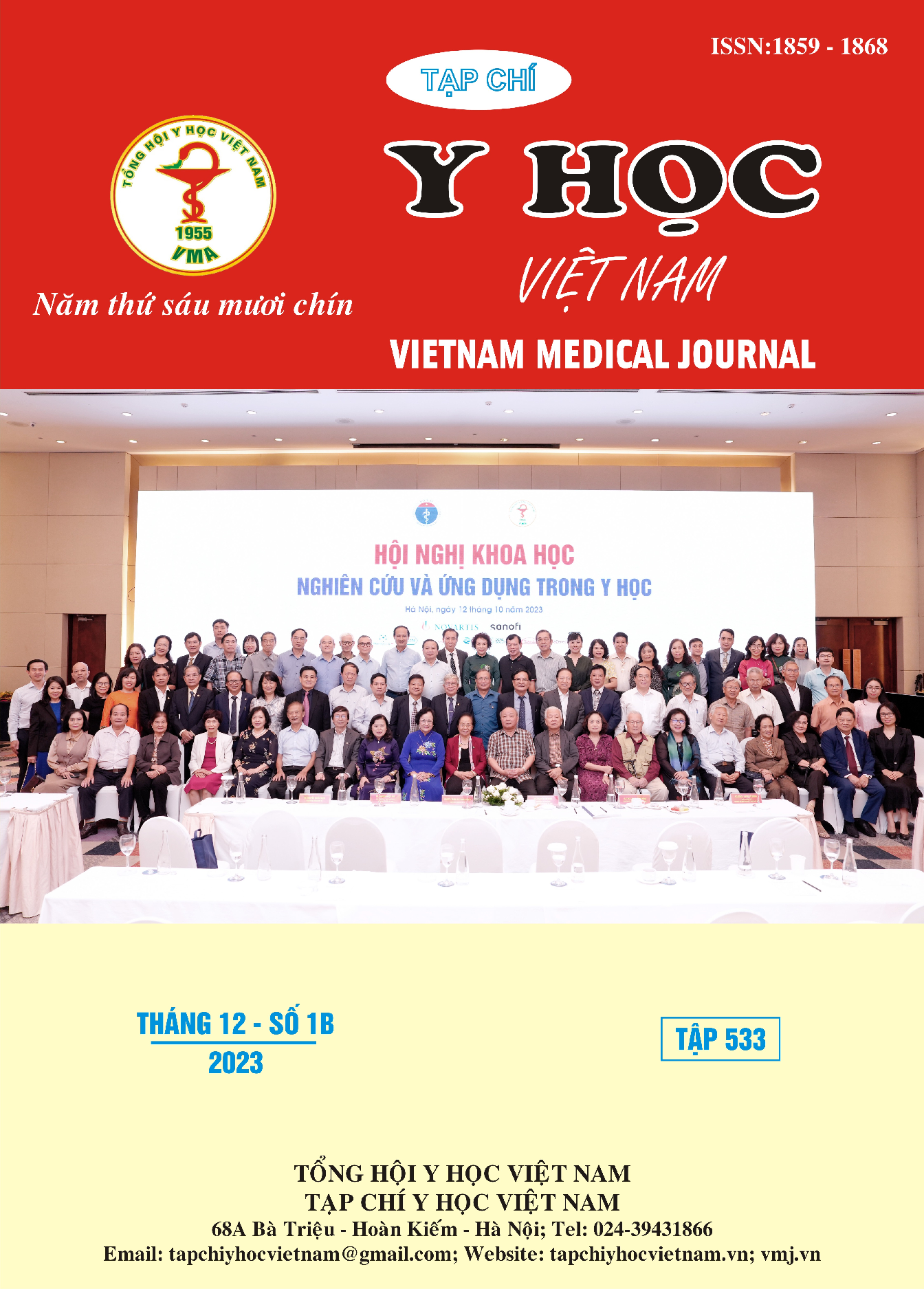RESULTS OF SURGICAL TREATMENT FOR UNDESCENDED TESTIS AT HANOI MEDICAL UNIVERSITY HOSPITAL
Main Article Content
Abstract
The purpose of this study is to describe the clinical and paraclinical characteristics of patients with undescended testis and evaluate the surgical outcomes of treating undescended testis. We conducted the study on 24 patients with undescended testis who underwent surgical fixation from January 2022 to November 2023. The average age in the study was 9.15±9.44 years, with the most common age being 5.5 years. 7 patients (29.2%) had associated conditions such as developmental delay, chronic bronchitis, penile torsion, tight foreskin, and a history of previous testicular descent surgery. Symptoms upon admission included the absence of palpable testis in 19 patients (79.2%), palpable mass in the groin area in 2 patients (8.4%), infertility in 1 patient (4.2%), and palpable high testis in 2 patients (8.3%). The right side was the most commonly affected side with 12 patients (50%), followed by the left side with 7 patients (29.2%), and both sides affected in 5 patients (20.8%). The most common location of undescended testis was within the inguinal canal in 19 patients (72.9%), followed by the inguinal ring in 3 patients (12.5%), and intra-abdominal in 2 patients (8.3%). Out of the surgeries, 20 patients underwent open surgery (83.3%), and 4 patients underwent laparoscopic surgery (16.7%). The average duration of open surgery was 67.8±27.9 minutes, while the average duration of laparoscopic surgery was 118±23.2 minutes. In 15 patients, residual vas deferens was found during surgery, accounting for 62.5%. No complications occurred during surgery, but one case (4.2%) developed testicular cancer 8 months postoperatively and required testicular excision. The average hospital stay for open surgery was 4.3±1.3 days, and for laparoscopic surgery was 3.25±0.5 days. All 24 patients (100%) were found to have the testis within the scrotum on postoperative examination. The preoperative testicular volume was 1.14±1.03 ml on average, and postoperative testicular volume was 1.03±0.97 ml on average. The difference in testicular volume before and after surgery was not statistically significant.
Article Details
References
2. Nguyễn Hoài Bắc. Bệnh Học Nam Học và y Học Giới Tính. Nhà xuất bản y học; 2022.
3. Hadziselimovic F, Hinman F, Cromie WJ, et al. Cryptorchidism: Management and Implications. Softcover reprint of the original 1st ed. 1983 edition. Springer; 2012.
4. Nguyễn Thanh Liêm. Phẫu thuật tiết niệu trẻ em. Nhà xuất bản y học; 2002.
5. Nguyễn Ngọc Tân. Kết quả điều trị phẫu thuật tinh hoàn không xuống bìu ở người lớn tại bệnh viện Hữu Nghị Việt Đức. Luận văn thạc sỹ y khoa. Đại học Y Hà Nội; 2023.
6. Tsujihata M, Miyake O, Yoshimura K, et al. Laparoscopic diagnosis and treatment of nonpalpable testis. Int J Urol. 2001;8(12):692-696.
7. Lattimer JK. Scrotal pouch technique for orchiopexy. J Urol. 1957;78(5):628-632.
8. Scrotal pouch techniques. Adjunct to orchiopexy - PubMed. Accessed November 17, 2023.
9. Mollard P, David M. [Surgical indications in testicular ectopias]. Presse Medicale Paris Fr 1983. 1983;12(17):1071-1074.
10. Lê Ngọc Từ. Bệnh Học Tiết Niệu. NXB Y Học; 1995.


